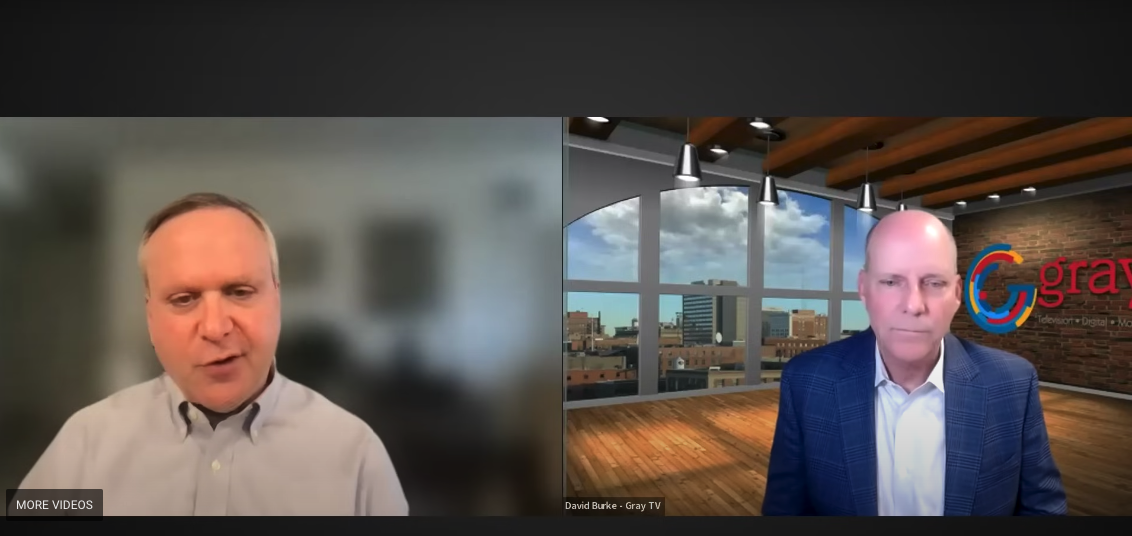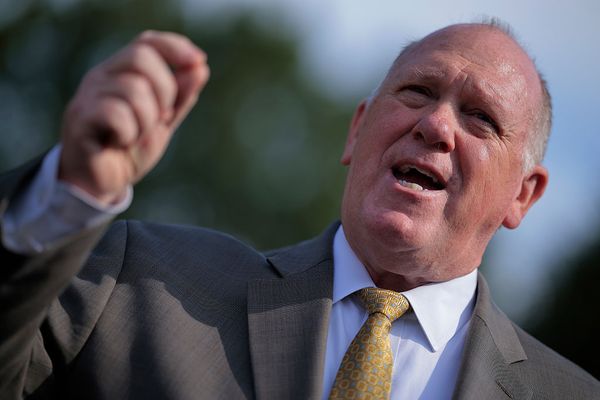
Gray TV, the nation’s second largest TV station group is leveraging its size and know-how to ensure that its stations provide the most comprehensive and original local coverage while tapping into new production and distribution technologies to enhance its presence on an increasing array of digital platforms.
In the opening keynote to the 2023 Fall TV Tech Summit, Gray TV CTO David Burke discussed the company’s media and technology strategies with TV Tech Content Director Tom Butts. Burke has been CTO for Gray for the past eight years, assuming the role after Raycom was acquired by Gray in 2018. With more than 10,000 employees, Gray stations are in 114 markets and is based in Atlanta.
Burke talked about the evolution of broadcasting in the digital age where broadcast is only one part of the equation when it comes to delivering news and entertainment to viewers.
Referring to the early days when the station moved online, “we would take clips of a newscast and then put them up on a website,” Burke said. “Today we have fully formed 24/7 digital streams on about every platform you can imagine. So that of course requires care and feeding and an infrastructure that is very similar to our over the air linear.”
"We have a digital newsdesk at all of our TV stations so they can create purpose-built, digital-only content," he added. “We also have a news bureau called 'Local News Live' which creates network national-type stories that we feed in and stitch into our digital streams. So at the end of the day, what you end up with for the most part is a complete original digital screen that is very compelling and attractive to our viewers.”
Burke emphasized Gray’s commitment to ATSC 3.0 (aka NextGen TV). The station group has deployed or participated in NextGen TV market launches in 27 markets, with eight of its markets serving as “lighthouse” hosts for local 3.0 signals, according to Burke.
“We as an industry must convert to NextGen TV just for the technical reasons alone—about better audio, better video, better spectrum efficiency, and IP capabilities,” he said. “We're on a 20 year-old technology with ATSC 1.0; it's not modular, and we can't continue to go through these huge upheavals of where we change our modulation and coding. That's just not something that we can continue to do in the future.”
Burke echoes broadcasters’ concerns over the future of ATSC 1.0 and efforts to negotiate an agreed-upon deadline to shut it down, thereby giving broadcasters the additional spectrum required to bring new features such as 4K to over the air broadcasting.
“There's not enough spectrum for us to continue the transition to 3.0, and regulatory-wise, even if we were at full deployment of 3.0, we've got to have that FCC authorization and permission at some point to turn off our 1.0 signal,” Burke said.
With artificial intelligence becoming an ever-increasing presence in media, Burke is well aware of the implications of the technology and its potential advantages as well as its pitfalls. Gray has formed an internal committee to establish its AI policies which are listed on its station websites. Burke was keen to distinguish the flavors of AI, in particular, the current risks of using generative AI in news.
“Gray is in the news content delivery business. We're journalists; and so integrity in fact checking and intellectual intellectual property rights, things like that are very key to our reputation and to our viewers," he said. “And so the challenge we have with generative AI is that as it goes and pulls data from various sources, it could lose context, it could lose intellectual property rights.”
“You can't just use AI as an answer to journalism," he added. "We can use it potentially as a research tool and to help us gather information, but by no means will we cross the line—journalism is truly about fact checking."
When it comes to recruiting new engineering blood into the broadcast industry, particularly when competing with high-tech, Burke says it’s better to bring IT people to broadcast rather than the other way around.
“We have to go out of our way now to try to find those IT resources and bring them in and teach them broadcast engineering; that's an easier approach,” he said. Acknowledging the disparities in payscale, Burke noted that many IT professionals prefer a more diverse approach to their careers and that broadcast engineering can fit that desire.
“One of the things that we try to promote within the broadcast industry is that when you come in and you work in engineering staff and TV station, you get your hands on all aspects of it,” he said. And most people with that type of mindset are very attracted to that type of work. They don't like to be pigeonholed.”
You can catch the entire conversation, along with the rest of the summit on-demand here.







